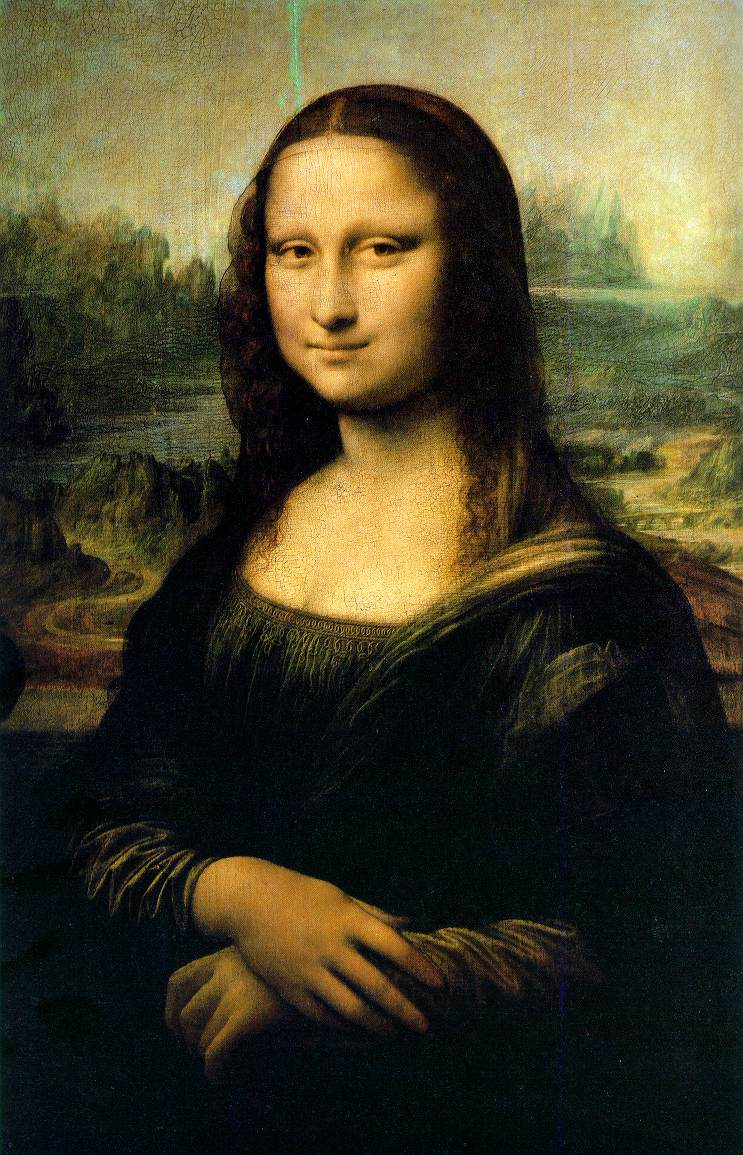The
Mona Lisa is the most famous painting/portrait in the world today. Historians
think this because of the theft that occurred in the early 20th
century. It took investigators and detectives 2 years to search for the
painting. However it wasn’t until
November 1913 where an Italian art dealer Alfredo Geri received a letter from a
person calling himself Leonardo. The letter stated that the Mina Lisa was in
Florence and would be returned for a ransom but when Perugia (the alleged
Leonardo) attempted to receive the ransom he was captured, with the painting
unharmed.
The Mona Lisa served as the main
inspiration for occidental portrait painting. (PBS) There are several
techniques Da Vinci uses one of which is the sfumato, which means vanished or evaporated. This technique is
simple creating an “imperceptible transition between light and shade and
sometimes with colours, almost painting without boarders. Something I found interesting when watching
the Khan Academy video is the difference in the landscape from her head up and the from the neck below. The landscape below her neck seems like an inhabited landscape with a bridge and winding
roads while the scenery at the top of the painting almost seems mysterious and
space like. A quote I found gives a better description as to what he thinks it
could be. “"The background may be a representation of
the universe, with mountains, plains and rivers. Or possibly it is both reality
and the world of dream. One could suppose that the landscape doesn't exist,
that it is the young woman's own dream world." (Cuzin)
Lastly, there is
great controversy surrounding her smile however I think the bigger controversy,
something relatively new is the notion that the muse for the Mona Lisa could be
a man. He goes by the name Gian Giacomo
Caprotti,also known as Salai. He worked as Leonardo’s apprentice and they were
rumored lovers. Silvano Vinceti, a
researcher who has closely studied the Mona Lisa using a state-of-the-art high
magnification techniques claims he found the letter “S” in the models eyes which
could be homage to Salai. But nothing is for certain. Even though we didn’t
discuss the Mona Lisa It was a painting that I was very curious to learn more
about it. I decided to blog about this because of the debate on weather or no the
model was man, something i found very intregueing because i never questioned the gender of the Mona Lisa before. I personally cannot
decide especially after I found this quote from an article from a professor at
Milan’s Politecico University
“All Leonardo’s subjects look like each other because he
represents an abstract ideal of beauty” (Bentley)
Sources:
http://www.history.com/this-day-in-history/theft-of-mona-lisa-is-discovered
http://www.pbs.org/treasuresoftheworld/mona_lisa/mlevel_1/m3technique.html
http://smarthistory.khanacademy.org/leonardo-mona-lisa.html
http://www.dailymail.co.uk/news/article-1352915/Mona-Lisa-model-man-Was-Leonardo-da-Vincis-male-apprentice-model.html

Wow! I never knew that there was a debate on the gender of the Mona Lisa, and I would have never thought her to even remotely resemble a man. I also think the interpretation of the background is very interesting--different takes on art are always refreshing to the ear, and this one was absolutely intriguing. Nice blog entry! (:
ReplyDeleteI agree with Kaley, this entry was so interesting! There was so much I didn't know especially the gender speculation. In which I have come to the conclusion that the Mona Lisa is a very clear sign of "Don't ask don't tell," I mean there's no denying that schnaz. As far as the background, I never even gave it partial attention, it sort of looks like riverdale off skyrim...Perhaps I'll start my own Mona Lisa background origin!
ReplyDeleteI've never paid much attention to the background in the painting before either. I find the notion that it could be a representation of the subject's dream world to be especially interesting. It certainly adds an extra layer of intrigue to this work of art.
ReplyDelete